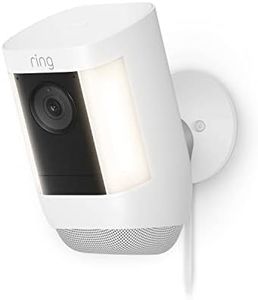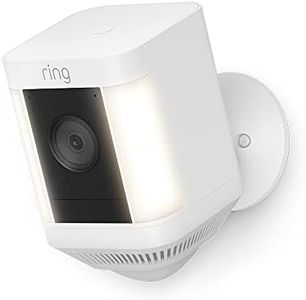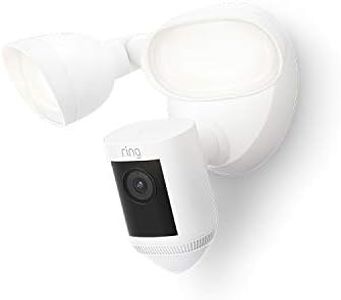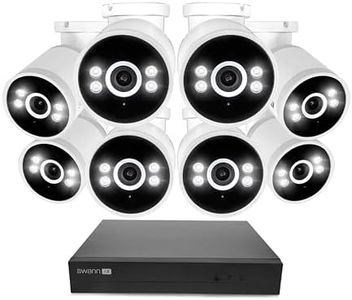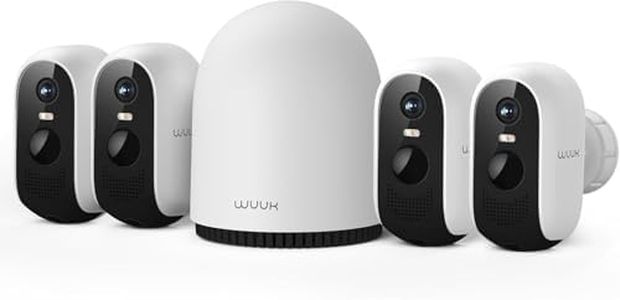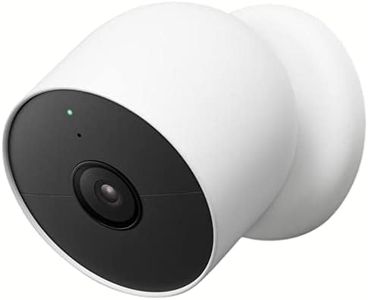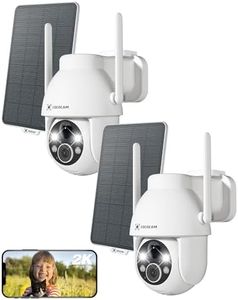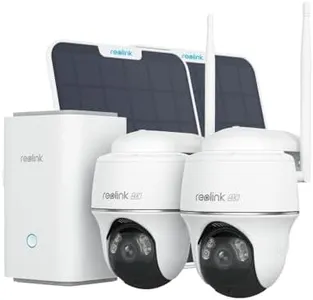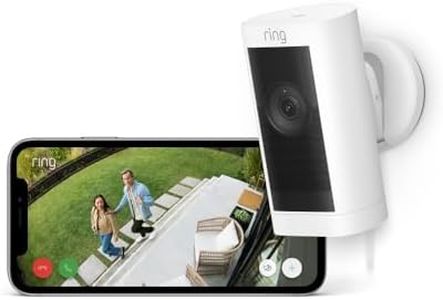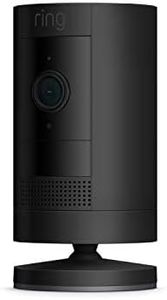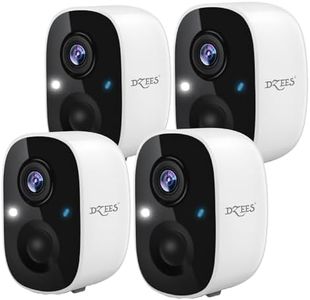We Use CookiesWe use cookies to enhance the security, performance,
functionality and for analytical and promotional activities. By continuing to browse this site you
are agreeing to our privacy policy
10 Best Security Cameras Systems
From leading brands and best sellers available on the web.By clicking on a link to a third party's website, log data is shared with that third party.
Buying Guide for the Best Security Cameras Systems
Buying a security camera system can be a great way to protect your property, monitor loved ones, or even just keep an eye on deliveries. Since there are many options on the market, it’s important to understand the key features so you can choose a system that fits your specific needs. Before you start shopping, think about where you'll install the cameras, what you want to monitor, and whether you need to check footage remotely. Understanding the key specifications will help make sure you end up with a system that keeps you confident and secure.ResolutionResolution refers to the clarity and detail of the image captured by the camera, usually described in pixels such as 720p, 1080p, or 4K. Higher resolution cameras provide clearer and more detailed images, which can be important if you need to identify faces or license plates. Lower resolutions such as 720p capture basic activity but are less detailed, suitable for general monitoring. Medium resolutions like 1080p offer a good balance for most homes. Higher resolutions (4K) are best for large areas or if you may need to zoom in on details later. Consider the areas you want to cover and how clear you need the footage to be – if you need to recognize small details, choose a higher resolution.
Field of ViewField of view tells you how wide an area a camera can see at once, usually measured in degrees. Cameras with a narrow field of view (below 90 degrees) are better for focusing on specific spots like doorways, while those with a wide field of view (above 110 degrees) can monitor larger spaces such as gardens or parking areas. For covering a large open area, look for cameras with a wide field of view. If you're only concerned about certain points, a narrower view will work and may offer better detail.
Night VisionNight vision is the ability for cameras to record clear images in low-light or complete darkness. This spec is usually listed as a range in feet or meters. If you need to monitor areas at night or in poorly lit places, look for a camera with a longer night vision range. For outdoors or large rooms, longer ranges work best, while for small indoor spaces, a short range may be sufficient. Think about when and where you expect to use your cameras most—if you need around-the-clock security, good night vision is essential.
Wired vs. WirelessThis refers to how cameras connect to power and the recording device. Wired cameras connect using cables and often provide more stable video but require installation work. Wireless cameras connect via WiFi or other wireless signals, making them easier to install and reposition, though they may need to be charged or have batteries replaced. Wired systems are a good fit for permanent setups requiring constant power and reliability. Wireless systems are great if you're renting or want flexibility in camera placement. Consider your living situation and whether you prioritize ease of installation or long-term performance.
Storage OptionsSecurity cameras store footage either locally (using built-in memory cards or a central recorder) or to the cloud (over the internet). Local storage gives you control and privacy but may be limited in space. Cloud storage offers easy remote access and longer history but may require a subscription and depends on internet reliability. If you want to access footage from anywhere, cloud storage is helpful; for simple setups and privacy, local storage might be enough. Think about how much footage you want to keep and how often you expect to check it.
Motion Detection and AlertsMotion detection lets cameras automatically record or send notifications when movement is detected. Some cameras allow you to adjust the sensitivity to avoid false alarms from pets or passing cars. If timely alerts are important (for example, to know immediately if someone is at your door), look for customizable motion detection and reliable alert systems. If you’re less concerned about instant updates, basic detection may suffice. Consider your lifestyle and how quickly you want to know if something is happening.
Weather ResistanceWeather resistance is important for outdoor cameras, ensuring they can withstand rain, snow, and varying temperatures. This is usually marked by an IP (Ingress Protection) rating, where higher numbers mean better protection. For outdoor cameras, check for weatherproof or waterproof ratings, especially if you live in harsh climates. Indoor cameras don’t need these features. Always think about where your cameras will be placed and if they'll be exposed to the elements.

